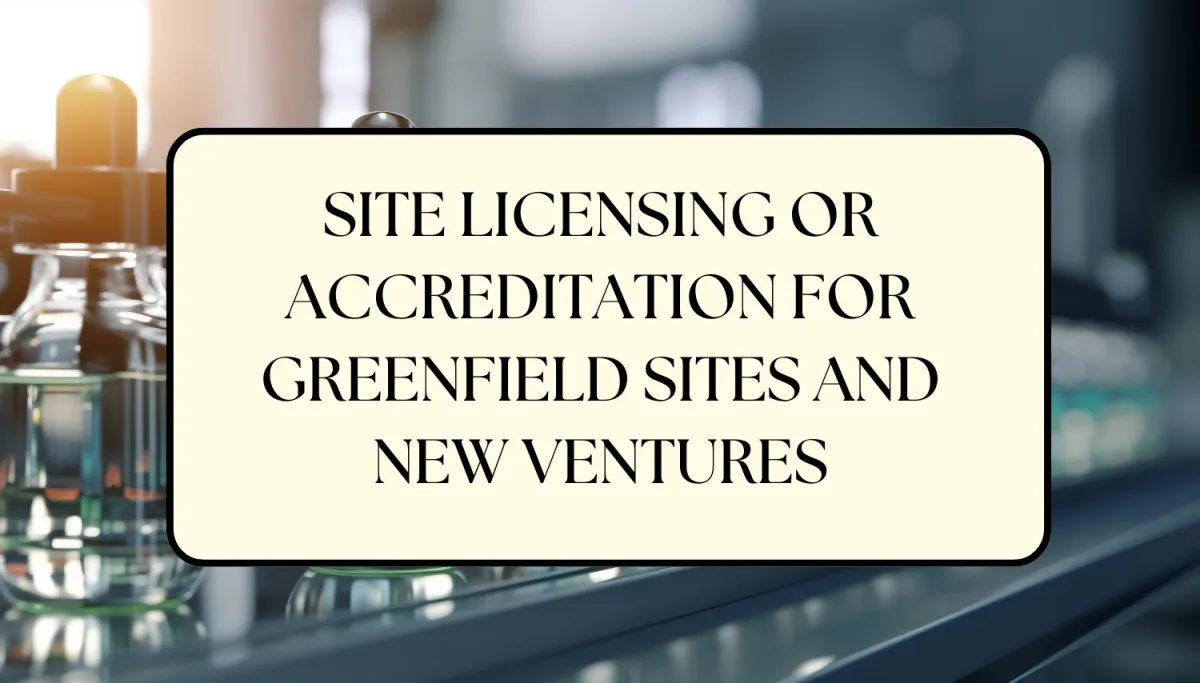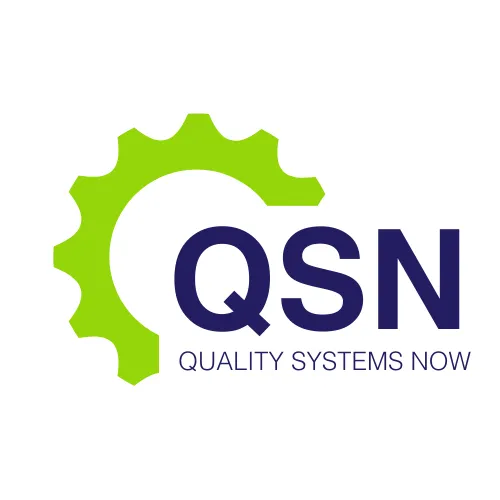Latest News

Site licensing or accreditation for Greenfield sites and New Ventures
Establishing a Greenfield site or a new venture in the pharmaceutical or medical device industries involves numerous regulatory and operational challenges. One of the largest hurdles is obtaining site licensing or accreditation, such as Good Manufacturing Practice (GMP) licensing or ISO13485 accreditation. These certifications are mandatory for complying with industry standards and registering therapeutic goods. This blog will explore the comprehensive strategy for achieving GMP licensing or ISO13485 accreditation, highlighting key elements such as process development, validation support, environmental monitoring, and quality management system (QMS) development.
At Quality Systems Now, looking after your Accreditation needs is what we do - find out more, get in touch
Strategy for GMP Licensing / ISO Accreditation
Gaining your site credentials for GMP or ISO13485 involves a systematic approach that integrates regulatory requirements with organizational capabilities. The strategy should encompass:
Initial Assessment and Planning: Conduct a thorough assessment of regulatory requirements specific to the type of site and products being manufactured. Develop a detailed project plan outlining timelines, resource allocation, and milestones.
Regulatory Framework Alignment: Ensure that the site’s processes and systems align with the regulatory frameworks of target markets, such as the FDA, EMA, or local health authorities.
Cross-Functional Coordination: Establish a cross-functional team including quality assurance, regulatory affairs, engineering, and operations to oversee the accreditation process.
Process Development and Validation Support
Developing robust processes and validating them are crucial steps in ensuring that the site can consistently produce high-quality products. Key activities include:
Process Design and Optimization: Design processes that meet regulatory standards and optimize for efficiency and scalability. Use process mapping and risk assessment tools to identify critical control points.
Validation Protocols: Develop and implement validation protocols for each process, ensuring they meet regulatory requirements. This includes installation qualification (IQ), operational qualification (OQ), and performance qualification (PQ).
Continuous Improvement: Implement a continuous improvement program to monitor process performance and make necessary adjustments.
Analytical Validation Support
Analytical methods must be validated to ensure they provide accurate, reliable, and reproducible results. This involves:
Method Development: Develop analytical methods in accordance with regulatory guidelines.
Validation Parameters: Validate methods for parameters such as accuracy, precision, specificity, linearity, range, and robustness.
Documentation: Maintain comprehensive documentation of validation studies, including protocols, results, and conclusions.
Support for Validation and Qualification
Validation and qualification activities are essential for ensuring that equipment, cleaning processes, and computer systems meet predefined criteria. Key areas include:
Cleaning Validation: Establish cleaning validation protocols to ensure that equipment is free of contaminants. This involves selecting appropriate cleaning agents, defining cleaning procedures, and validating their effectiveness.
Equipment Qualification: Perform IQ, OQ, and PQ for all critical equipment to ensure it operates within specified parameters.
Computer System Validation (CSV): Validate computer systems to ensure data integrity, security, and compliance with regulatory requirements.
Environmental Monitoring Programs
Environmental monitoring is critical for maintaining controlled conditions in manufacturing areas. This includes:
Program Development: Develop an environmental monitoring program that outlines sampling locations, frequencies, and methods.
Contamination Control: Implement contamination control measures, including air filtration systems, controlled access, and regular cleaning.
Data Analysis: Regularly analyze environmental monitoring data to identify trends and take corrective actions as needed.
Dress Code Requirements
Proper dress code requirements are essential for minimizing contamination risks. Guidelines include:
Gowning Procedures: Establish gowning procedures for different cleanroom classifications.
Personal Protective Equipment (PPE): Define the necessary PPE for various operations and ensure compliance.
Training: Provide regular training on gowning and hygiene practices.
Material, Personnel, and Product Movement
Efficient movement of materials, personnel, and products within the facility is crucial for maintaining product integrity and minimizing contamination risks. Key considerations include:
Workflow Design: Design workflows that minimize cross-contamination risks, including separate pathways for raw materials, personnel, and finished products.
Access Control: Implement access control measures to restrict entry to critical areas.
Logistics Planning: Develop logistics plans that ensure timely and efficient movement of materials and products.
QA for Facility Design Reviews and Facility Layouts
Quality assurance should be integrated into facility design and layout planning to ensure compliance with regulatory requirements and operational efficiency. This involves:
Regulatory Compliance: Ensure facility designs meet all regulatory requirements, including GMP and ISO standards.
Operational Efficiency: Design layouts that facilitate smooth workflows and minimize contamination risks.
User-Centric Design: Consider the needs of end-users in facility design to enhance usability and safety.
QMS Development, Go-Live, and Personnel Training
A robust QMS is foundational for achieving and maintaining GMP licensing or ISO accreditation. Key steps include:
QMS Framework: Develop a QMS framework that aligns with regulatory requirements and best practices.
Implementation: Implement the QMS across all functions and processes.
Personnel Training: Provide comprehensive training on QMS principles, procedures, and responsibilities.
Supplier Qualifications and Management
Ensuring the quality and reliability of suppliers is crucial for maintaining product quality. This involves:
Supplier Audits: Conduct thorough audits of potential suppliers to assess their compliance with regulatory standards.
Performance Monitoring: Continuously monitor supplier performance and quality.
Risk Management: Implement risk management strategies to address potential issues with suppliers.
Material Qualifications and Management
Proper qualification and management of materials are essential for ensuring product quality and regulatory compliance. Activities include:
Material Specifications: Define and document specifications for all materials.
Supplier Qualification: Qualify suppliers based on their ability to meet material specifications.
Quality Control: Implement quality control procedures for incoming materials.
Supporting Studies Required for Site Licensing or Accreditation
Conducting supporting studies is critical for demonstrating compliance with regulatory requirements. These studies include:
Process Validation Studies: Conduct studies to validate manufacturing processes.
Stability Studies: Perform stability studies to determine the shelf life of products.
Toxicology Studies: Conduct toxicology studies to assess the safety of products.
Training and Mentoring in Regulations, Key Systems, QMS, and Top Management Responsibilities
Training and mentoring are crucial for ensuring that all personnel understand and comply with regulatory requirements. This includes:
Regulatory Training: Provide training on relevant regulations and standards.
System Training: Train personnel on key systems and processes.
Top Management Training: Ensure top management understands their responsibilities and roles in maintaining compliance.
Audit Readiness and Preparation
Being audit-ready is essential for successfully obtaining and maintaining accreditation. This involves:
Gap Analysis: Conduct gap analyses to identify areas of non-compliance.
Audit Preparation: Prepare for audits by reviewing documentation, conducting mock audits, and addressing identified gaps.
Audit Support: Provide support during audits, including managing auditor interactions and addressing queries.
Addressing Audit Findings and Post-Audit Activities
Post-audit activities are critical for addressing findings and ensuring continuous improvement. This includes:
Corrective Actions: Develop and implement corrective actions to address audit findings.
Continuous Improvement: Use audit findings to drive continuous improvement in processes and systems.
Documentation: Maintain comprehensive documentation of audit findings, corrective actions, and follow-up activities.
Conclusion
The journey to obtain site licensing or accreditation for Greenfield sites and new ventures is complex and multifaceted. It requires a strategic approach that integrates regulatory compliance, process development, validation, environmental monitoring, and robust quality management systems. By focusing on these critical areas and ensuring comprehensive training and mentoring, organizations can achieve and maintain the highest standards of quality and safety in their operations. This not only ensures compliance with regulatory requirements but also enhances operational efficiency and product quality, ultimately safeguarding patient health and safety. We are here to discuss Your Questions.
